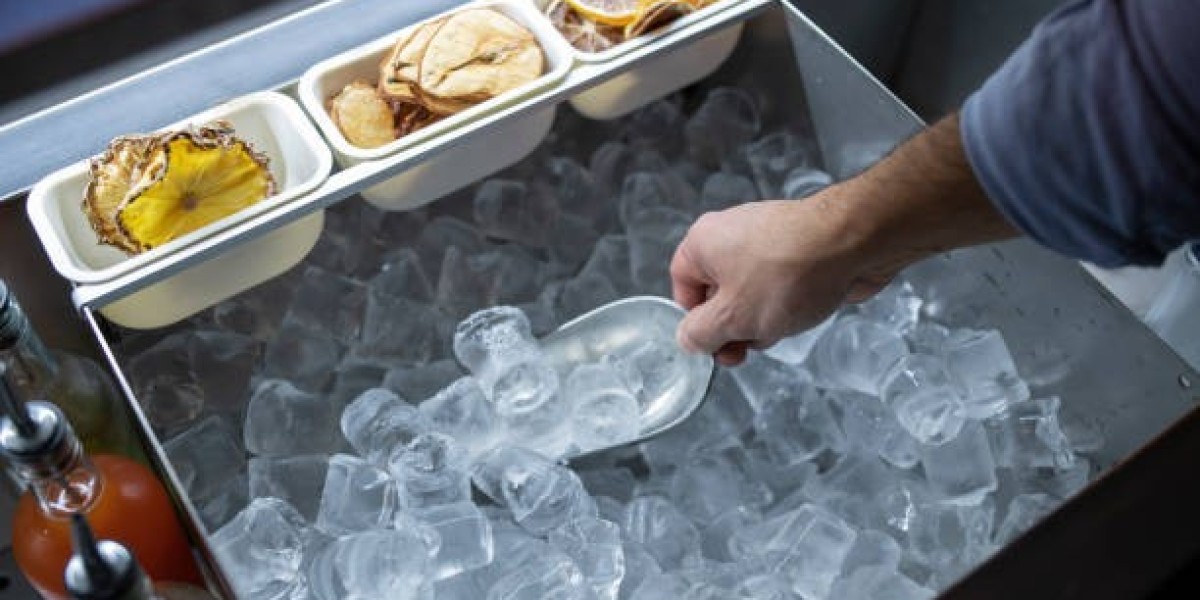Introduction
Ice machines are crucial appliances in many industries and settings, from restaurants and bars to hospitals and industrial facilities. They produce ice in various forms, catering to diverse needs. This guide provides an overview of ice machines, their types, applications, and essential maintenance practices.
What is an Ice Machine?
An ice machine is an appliance designed to produce ice. It operates by cooling water to below freezing temperatures, creating ice that can be used for cooling, preservation, and various other purposes. Ice machines come in different styles and capacities, tailored to meet specific needs based on the environment and volume of ice required.
Types of Ice Machines
Ice machines are categorized based on the type of ice they produce and their installation requirements. The primary types include:
Cubed Ice Machines
- Full Cubes: Also known as "hotel" or "ice cubes," these are large, solid cubes of ice that melt slowly and are commonly used in beverages.
- Half Cubes: Smaller than full cubes, these are often used in commercial settings where rapid cooling is required.
Flaked Ice Machines
- Produces thin, flat flakes of ice. Flaked ice is ideal for applications needing quick cooling and easy conformance to shapes, such as in seafood displays or medical facilities.
Crushed Ice Machines
- Creates small, irregular pieces of ice by crushing larger ice blocks or cubes. Crushed ice is popular in bars and restaurants for cocktails and beverages.
Nugget Ice Machines
- Also known as "chewable" or "pellet" ice, nugget ice is soft and chewable. It’s commonly used in healthcare and foodservice environments for its easy-to-chew texture and efficient cooling properties.
Block Ice Machines
- Produces large blocks of ice that are often used in industrial applications or for cooling large volumes of materials.
Applications of Ice Machines
Food and Beverage Service
- In restaurants, bars, and hotels, ice machines provide the necessary ice for beverages, food presentation, and cooling. The type of ice chosen often depends on the specific needs of the establishment.
Healthcare
- Ice machines are used for therapeutic purposes, such as providing ice packs for patients, and in laboratories for cooling and preserving pharmaceuticals.
Industrial Uses
- In industries such as chemical processing or construction, ice machines help in cooling equipment or materials, maintaining temperature-sensitive processes, and ensuring product quality.
Retail
- Supermarkets and fish markets use ice machines to keep perishable items fresh and maintain proper storage temperatures.
Choosing the Right Ice Machine
When selecting an ice machine, consider the following factors:
Capacity and Production Rate
- Determine the volume of ice needed and choose a machine that can meet your demands efficiently. Ice machines are available in various sizes and production capacities.
Type of Ice
- Select the type of ice that best suits your needs, whether it’s cubed, flaked, crushed, or nugget ice.
Installation and Space
- Consider the space available for installation and whether you need a standalone unit or an under-counter model.
Energy Efficiency
- Look for energy-efficient models to minimize operational costs and environmental impact. Energy Star-rated machines are a good choice.
Maintenance Requirements
- Assess the ease of maintenance and cleaning. Regular maintenance ensures optimal performance and longevity of the machine.
Maintenance and Care
Proper maintenance is essential to keep your ice machines running efficiently and extend its lifespan. Key maintenance practices include:
Regular Cleaning
- Clean the ice machine regularly to prevent mold, bacteria, and scale buildup. Follow the manufacturer’s instructions for cleaning procedures.
Check Water Quality
- Use filtered water to prevent mineral buildup and ensure high-quality ice production.
Inspect and Replace Parts
- Regularly check components like the condenser, evaporator, and water pump for wear and tear. Replace parts as needed to avoid breakdowns.
Monitor Performance
- Keep an eye on the machine’s performance to identify any issues early. Ensure that ice production is consistent and that the ice quality meets your standards.
Professional Servicing
- Schedule periodic professional servicing to address complex issues and ensure the machine operates efficiently.
Conclusion
Ice machines are indispensable tools across various sectors, each designed to meet specific ice production needs. Understanding the different types of ice machines and their applications will help you choose the right one for your requirements. Proper maintenance and care are crucial for ensuring the longevity and optimal performance of your ice machine, keeping it a reliable asset in your daily operations.







